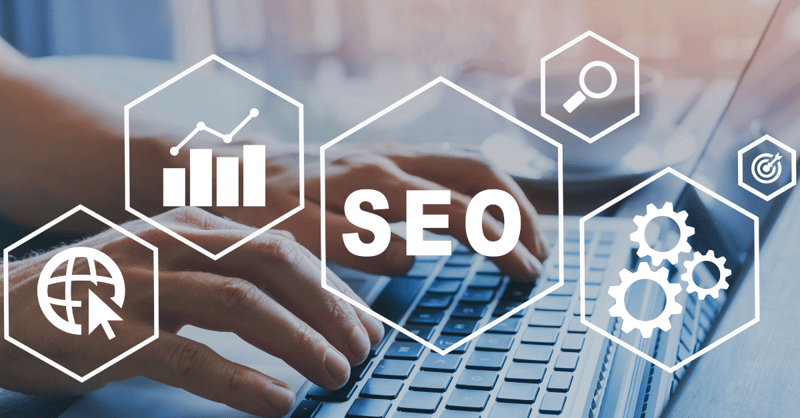Tried and tested best practice will make the best of whatever economic and political situation a business finds itself in - including the extraordinary circumstances brought about by the Covid-19 outbreak.
Every crisis goes through phases. Initially it's all about assessing the damage and taking decisive actions to stabilise operations. Only then can you create the space to think constructively about what new opportunities might present themselves - marketing plays a crucial role here. And finally you need to prepare yourself for the day when the crisis is over, so that you are ready to act swiftly and boldly.
Shortcuts
- Looking after your customers
- Core elements of good business: positioning, people and brand
- Price perception: offer consistent value
- What not to do in challenging times
- Conclusion: let go of fear
Looking after your customers
The key thing to remember at the present time is that our customers are just as affected by these changes as you are. Putting them at the heart of your strategy means your business will remain relevant and helpful to them. Ask yourself - how does the uncertainty of the day impact them, and how can you adjust your offering to help them overcome these difficulties? Love your customers and they’ll be more likely to stay with you through troubled times.
Customer-first business - what does love look like?
Customer-first thinking and practice increase customer satisfaction, encourage repeat custom, boost customer referrals and – in turn – grow sales. They also reduce the churn factor, as fewer customers leave if more of their needs are being met.
Businesses survive by giving value to their customers - solutions to their problems, answers to their questions, and offerings that meet their needs. Knowing why your customers are your customers - what specific benefit your product or service does for them - is the key to delivering that value.
This is why you, as a business leader, need to be in tune with what your customers say they want, and what they actually need. Too many businesses rely on assumptions and don’t realise that demographic details, typical spend and product interest are only scratching the surface of the possible insight they could have on their customers. What you need to find out is the why. Why do customers engage with your business in the first place, what do you do for them? What are their fears, in and out of their business?
Look closely at your social media interactions and your online reviews; encourage feedback at and after the point of service. Send out keep-in-touch emails and schedule calls. Build your customer interactions around touchpoints where you can ask the customer how they are coping , and be sure to listen to the answers.
Three pillars of customer-first business
Customer-first business is built on three principles:
1. Listening. Listen to the worries and concerns of your customers, whether through social media or other platforms.
2. Responding. There's no sense listening if you don't take action. Be as open as possible about how you're going to help them - that engenders trust.
3. Responsibility. Prioritise ethics in your business practice and take control of your customer experience. Look out for your customers, and when things go wrong, apologise and make good.
Nothing happens in a vacuum. By understanding and addressing their concerns, and being direct, positive, respectful, honest and responsible, you’ll help your customers manage their worries and their strife, helping to keep them - and your business - on an even keel.
Core elements of good business: positioning, people and brand
When economic indicators point toward major recession, the key question for boards and business leaders is “how will our business survive?” The answer: by focusing their efforts on the three key elements of good business in any market: positioning, people and brand.
Positioning
Positioning in the marketplace is about standing out from the crowd; making a bold statement and setting yourself apart from your competition. All marketing and business decisions are built on positioning: a well-positioned offering will thrive no matter how low the competition goes on price.
Price - which we’ve already seen is a core element in your business strategy - is fundamental to effective positioning. Don’t under or over-value your product or service, or feel compelled to match what the competition are doing. For customers to have confidence in your offering, your pricing has to reflect its value, and that means a premium service commands a premium price.
Regular contact with customers and a strong brand identity are also vital. In turbulent markets, consumers turn to brands that are familiar and comfortable. If you’re positioned as the familiar choice - strong and stable - you’ll be able to charge what you need to during the downturn, without losing custom. That familiarity and stability will keep customers loyal, even if you’re forced to raise prices to maintain profit.
Furthermore, disruption also potentially provides you opportunities to redefine your position by adjusting your offerings and introducing new ones that are more relevant to the current circumstances.
People
Your people are the most important asset your business has. This means putting your customers first, but it also means looking after your staff. Most companies say this, a crisis determines whether you actually mean it.
Like everyone else, your employees will be concerned, worried, confused or even angry about Covid-19 and its effect on their lives. You must help them remain positive, and safe - because happy, confident and safe staff deliver a better service, and pass those feelings on to the customer.
Brand
Brand is the third pillar of business survival and growth. A strong brand extends beyond names and logos - it’s the cumulative result of your business’ achievements and personality. Effective branding also makes running a business simpler, as everyone involved knows the message their actions and interactions with customers must express. This clarity and confidence will be vital in presenting a united, coherent front in times of economic uncertainty.
Every action and interaction your business undertakes builds brand equity. Positive brand equity means profit, stability and customer loyalty. Negative brand equity means loss, uncertainty, and a constant struggle to be seen as a good business. By keeping control of your brand equity and ensuring everything your business does is consistently on-message, you’ll remain credible and attractive to customers.
Price perception: offer consistent value
Economic uncertainty means price rises on everything from fish fingers to sportscars. At the same time slumps in demand result in panic promotions and firesales in a "dash for cash". Meanwhile, currency values can drop, bounce back, and stagger unsteadily on through prolonged instability. Goods and services cost more; money is worth less, or at least has less consistent worth.
When you can’t count on the value of money, a focus on pricing is essential. Your business should always price optimally to maximise sales and profit margins, regardless of external factors, but doubly so in uncertain times.
How is marketing involved in pricing decisions?
It’s easy to forget that marketing plays a huge part in determining the price of a product or service. Finance are responsible for maintaining margins, sales have insight into customers’ willingness to pay and a sense of value, but marketing brings crucial knowledge of the market the product has to thrive in.
Marketing defines and frames your pricing strategy - the price band that will work best for your product and brand. Market research identifies and analyses the prices being charged by competitors, giving you a sense of the viable price points that exist and can be challenged. Knowing your market inside-out is vital to ensure your prices sit at the right point between profit and viability.
How do your customers relate to your prices?
When you’re setting a price for your product, put yourself in the customer’s shoes. What decisions do they have to make before buying? Is your offering a standard purchase or a big investment for them? Small, regular purchases are relatively painless; large, irregular ones come with a weight of responsibility and a fear of making a bad decision.
What to do if you have to increase prices
The size and scale of your customers’ purchase decisions will not change if your cost of sale increases – only the barriers and factors involved in decision-making will be affected, as money will likely be tighter for your customer, too. The key is to manage those factors well, by explaining your situation to your customers with clarity and honesty. Your customers will understand that markets are shifting, costs are going up and prices must rise with them - provided you remind them that they’re getting value for money.
It can help to change the way you display your prices to do this. Offering a set price for products and services makes snap decisions easier, but uncertain customers don’t make snap decisions.
By displaying a range of prices and explaining the services they buy, you can encourage customers into a sense of security from which they’re more likely to buy.
That sense of security is vital. It’s hard to future-proof when nobody knows what’s going to happen, and business leaders can’t afford to wait and see. The goal, therefore, is to focus on what’s in your hands - the value you offer your customers and how you reassure them by explaining that value is still there.
What not to do in challenging times
“Wait and see” is not a strategy you can deploy at the present - quick and decisive action is needed.
We’ve looked at three things you can do to prepare your business for the stress caused by the coronavirus outbreak, in all its forms- now it’s time to look at what not to do.
1. Accept the negative
Press reports, economists, politicians and pundits on social media represent a rising tide of negativity. But a negative mindset will not help you or your business. Now is the time to be a reassuring presence in your market - talk to your customers, sound out their concerns, and tell them what you’re doing to help them.
2. Take unnecessary risks
Rushing into major decisions can have long-term consequences. It’s vital that your business doesn’t gamble on getting ahead of the competition. Test your marketing campaigns before you spend too much on them; conduct user tests for new products. Don’t spend big money until you know what you’re doing. However, at the same time, doing nothing is the riskiest strategy of all.
3. Play your marketing by ear
You may be tempted to spread your net wide, in the hope of catching as many customers as you can. Don’t do that. It won’t win you customers; it will cost you money and undermine your brand. Good marketing requires a focused, targeted, goal-driven strategy.
4. Abandon your budget
Don’t panic. Don’t throw money out now in an effort to secure business while you still can. Stick to your plan. Start with your business goals and work backwards. Formalise what you’ll spend on specific marketing activities within a set timeframe, and measure them against specific metrics. Don’t waste money on marketing that isn’t goal-oriented.
5. Forget about ROI
Marketing is an investment, not a cost. It must pay for itself at some point, even if that may be further in the future than you would ordinarily expect. Without insight into how your marketing is affecting your bottom line, you may as well be crossing your fingers and hoping for the best. Build yourself a marketing dashboard that reports on the crucial metrics - marketing as a percentage of sales, and cost per customer acquired, plus the metrics that indicate your progress toward your current marketing goals. Fortunately, while many of your competitors slash their budgets there are likely to be opportunities (in media spend or PPC, for instance) to strike great deals and significantly reduce your customer acquisition costs"
If the last few years have taught us anything, it’s that you need a strategy, budget and clear set of goals before engaging in any drastic action. Acting without a plan will force you to rely on insights you can’t trust, beholden to promises you can’t keep, struggling to deliver a compromise that will keep your business intact.
Conclusion: let go of fear
Economic landscapes are shaped and determined by human decisions, and those decisions often aren’t rational - toilet-paper, anyone? They’re made in the moment, under pressure of financial targets, informed by gut feelings and current trends. They are made, in short, in a climate of fear.
If you’re afraid of failure, your business will suffer. It seems paradoxical, but fearlessness - confidence in what your business stands for, the value it offers customers, and the loyalty it fosters in customers and employees alike - will carry you through. As a business leader, you must focus on positive achievements, not unfavourable consequences. While the rest of your sector is worried about decline and fall, you need the courage to see your potential.
Your costs may go up, but a sensible pricing strategy will help retain customers. Customer confidence and spending may go down, but communicating clearly and honestly will remind them why they should stick with you. No matter what the economic situation may be, the fundamentals of good business don’t change - and right now, they’re more important than ever.
A part time Marketing Director can bring clarity to a business in times of strife. Why not hire one of ours?




